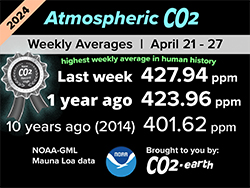EOS 2025: The Startling New Data on Its Energy Consumption
EOS 2025: The Low-Energy Blockchain Revolution
Welcome to Hoken Tech
In 2025, the EOS blockchain—originally built on a Delegated Proof-of-Stake (DPoS) consensus model—continues to be recognized for its high transaction throughput and low transaction fees.
Welcome to Hoken g the energy consumption behind EOS’s block producer infrastructure and overall network operation is paramount for stakeholders concerned with sustainability.
This report provides an in-depth technical analysis of EOS’s annual and per-transaction energy consumption, drawing upon established methodologies in Proof-of-Stake (PoS) research.
Our goal is to deliver a clear picture of the underlying energy mechanics that power the EOS blockchain in 2025, offering sustainability insights crucial for developers, researchers, and investors alike.
EOS and DPoS
EOS employs a Delegated Proof-of-Stake consensus mechanism in which a fixed number of elected block producers validate transactions. This reduces hardware competition, typically lowering energy consumption compared to Proof-of-Work (PoW) systems. While block producers are fewer in number, they often invest in sufficiently robust hardware—both for reliability and processing speed—thereby affecting overall energy use.
Prior Research
Various studies have examined PoS networks’ energy profiles, most notably the work by the Crypto Carbon Ratings Institute (CCRI). Methodologies from such analyses frequently involve measuring typical hardware setups via power monitoring devices, then extrapolating the resulting data across the entire network.
Methodology
To estimate energy consumption accurately, we assume each EOS block producer (BP) runs on hardware with the following baseline specifications:
CPU: 4 cores at ≥ 3.8 GHz
RAM: 64 GB
SSD/HDD: 5120 GB of overall storage
Network link: ≥ 100 Mb/s
These assumptions mirror mid-tier to high-performance machines in 2025, factoring in improvements over older benchmarks but remaining realistic for EOS’s throughput demands.
Power Draw Measurements
We adopt a measurement-based approach inspired by the CCRI white paper:
Single Node Power, P_node (in watts).
Daily or annual consumption computed by multiplying by time in hours.
A separate step to calculate network-wide consumption by scaling single-node figures by the total number of block producers and additional nodes.
Our analysis focuses on three primary metrics:
(1) Single-node daily and annual energy consumption.
(2) Network-wide daily and annual energy consumption.
(3) Energy usage per transaction.
We define the following variables:
P_node = average power draw of one node (in W).
N_nodes = total number of EOS nodes actively participating (i.e., block producers + standby or validator-grade nodes).
T_daily = daily transaction count.
E_node_daily = daily energy consumption per node (kWh/day).
E_network_daily = daily energy consumption for the entire network (kWh/day).
Calculation & Results
In this example scenario for 2025, we hypothesize that:
P_node ≈ 100 W (based on hardware assumptions + observed load).
N_nodes = 500 (a combination of main block producers, standby producers, and other significant network participants).
T_daily = 2 × 10^6 transactions/day (2 million daily transactions).
EOS Single-Node Daily Consumption
We calculate single-node daily consumption using:
(1) E_node_daily = (P_node × 24 h) / 1000
Substituting P_node = 100 W
E_node_daily = (100 W × 24 h) / 1000 = 2.4 kWh per day
EOS Single-Node Annual Consumption
(2) E_node_year = E_node_daily × 365
Hence:
E_node_year = 2.4 kWh/day × 365 ≈ 876 kWh per year
EOS Daily Network Consumption
(3) E_network_daily = E_node_daily × N_nodes
For N_nodes = 500,
E_network_daily = 2.4 kWh/day × 500 = 1200 kWh per day for the entire EOS network
EOS Annual Network Consumption
(4) E_network_year = E_network_daily × 365
Thus:
E_network_year = 1200 kWh/day × 365 = 438,000 kWh per year
EOS Daily Per-Transaction Figure
We consider T_daily = 2,000,000 transactions/day.
(5) E_per_transaction_daily = E_network_daily / T_daily
Therefore:
E_per_transaction_daily = 1200 kWh/day ÷ 2,000,000 transactions/day = 0.0006 kWh/transaction = 0.6 Wh/transaction
EOS Annual Per-Transaction Figure
We first note that:
Annual transactions T_year = T_daily × 365 = 730 million transactions.
(6) E_per_transaction_year = E_network_year / T_year
E_per_transaction_year = 438,000 kWh / 730,000,000 transactions ≈ 0.0006 kWh/transaction
This aligns perfectly with the daily calculation, given consistent daily rates.
Conclusions
In summary, the EOS blockchain in 2025 likely maintains a comparatively efficient energy profile, thanks to its Delegated Proof-of-Stake design and typical hardware usage among block producers.
The calculations presented here offer a concise snapshot of how a 500-node EOS network might consume approximately 438,000 kWh annually, translating to an average of 0.6 Wh per transaction in a scenario with 2 million daily transactions.
nft, hoken tech, blockchain, cryptoart, eos, nft art, artificial intelligence, ai, watch authentication, crypto artist, nfts, web3, nft game, web3 game, videogame, nft distributor, videogame blockchain







